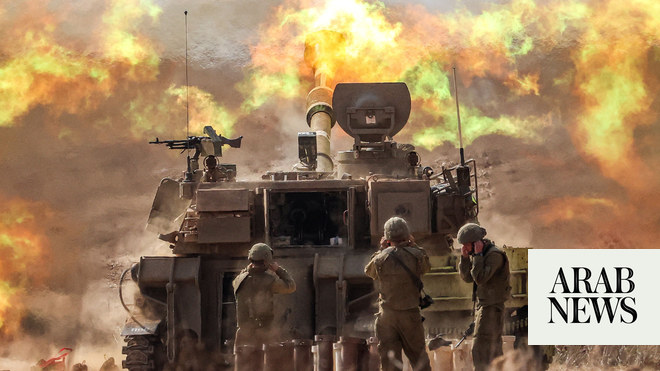DUBAI: Following the death of Ebrahim Raisi in a helicopter crash, Iranians will choose between predominantly hard-line candidates in early presidential elections on Friday.
Only six of over 80 candidates survived the scrutiny of the Guardian Council, a body of clerics and lawyers that reports to Supreme Leader Ayatollah Ali Khamenei, who has the final say in all state affairs. Two hard-line candidates withdrew from the race before the election.
The president, who runs the day-to-day affairs of the government and bears special responsibility for Iran’s ailing economy, is ultimately accountable to the Supreme Leader.
Below are brief sketches of three hardliners and one moderate candidate for the upcoming election:
MOHAMMAD BAKER ALIPHAF
Qalibaf, a former commander of Iran’s Revolutionary Guard Corps and ally of Khamenei, is the current speaker of the hardline-dominated parliament. He had previously run unsuccessfully for president twice and had to withdraw his third candidacy in 2017 to avoid a split hardline vote in Raisi’s first failed presidential attempt.
In 2005, Qalibaf resigned from the Guard to run for president. After his unsuccessful campaign, with the support of the Supreme Leader, he assumed the office of mayor of Tehran, a post he held for twelve years.
In 2009, as mayor of Tehran, Qalibaf took credit for helping to quell months of bloody unrest that had rocked the establishment following a presidential election that opposition candidates said was rigged to ensure the re-election of hardliner Mahmoud Ahmadinejad.
He is known to civil rights activists as someone who cracked down on protests as national police chief, personally beat demonstrators in 1999 and also played an active role in quelling riots in 2003. Qalibaf did not respond to a request for comment on these allegations.
Saeed Jalili
Jalili is a hard-line diplomat who lost his right leg while fighting for the Guards in the Iran-Iraq War in the 1980s. Jalili has a doctorate in political science and says he is a devout follower of Iran’s “velayat-e faqih,” or rule of supreme jurisdiction, an Islamic system of governance that forms the basis of Khamenei’s position.
Appointed by Khamenei, Jalili served as secretary of the Supreme National Security Council for five years from 2007, automatically making him the chief nuclear negotiator. Jalili also served in Khamenei’s office for four years and was an unsuccessful candidate in the 2013 presidential election.
Jalili, a former deputy foreign minister, was appointed by Khamenei in 2013 as a member of the Expediency Council, a body that mediates disputes between parliament and the Guardian Council.
MASSOUD PEZESHKIAN
Pezeshkian, an Iranian lawmaker of Azerbaijani descent, is the only moderate candidate endorsed by the Guardian Council and supported by the pro-reform camp. His prospects depend on winning over millions of disillusioned voters who have stayed home from the polls since 2020.
Pezeshkian is a doctor by profession and was Minister of Health under the reformist President Mohammad Khatami from 2001 to 2005. He has been a member of parliament since 2008.
Pezeshkian has been vocal in criticizing the Islamic Republic for its lack of transparency surrounding the death of young Iranian Kurdish woman Mahsa Amini in custody in 2022, which sparked unrest for several months.
Pezeshkian was barred from the 2021 presidential election.
MOSTAFA POURMOHAMMADI
Pourmohammadi is the only cleric in the race for the post. He served as interior minister from 2005 to 2008 during the hardliner’s first term under former President Mahmoud Ahmadinejad.
He served as deputy minister of intelligence from 1990 to 1999. Human rights groups claim that he was involved in the murder of several prominent intellectual dissidents in Iran in 1998. He has not commented on the allegations himself, but a 1998 Ministry of Intelligence statement said: “These killings in the interests of foreign countries were carried out by a small number of irresponsible, renegade and criminal agents of the Ministry, who were most likely puppets of others.”
Human Rights Watch documented Pourmohammadi’s alleged role in the execution of hundreds of political prisoners in the Iranian capital in 1988 in a 2005 report.
Pourmohammadi has never publicly commented on the allegations concerning his role in a so-called “death committee” in 1988, which consisted of religious judges, prosecutors and intelligence officials and oversaw the executions.

